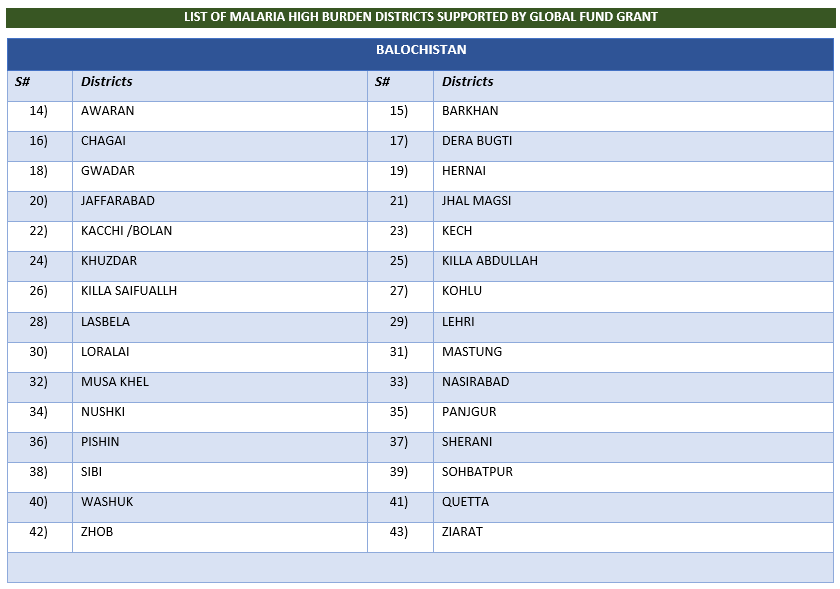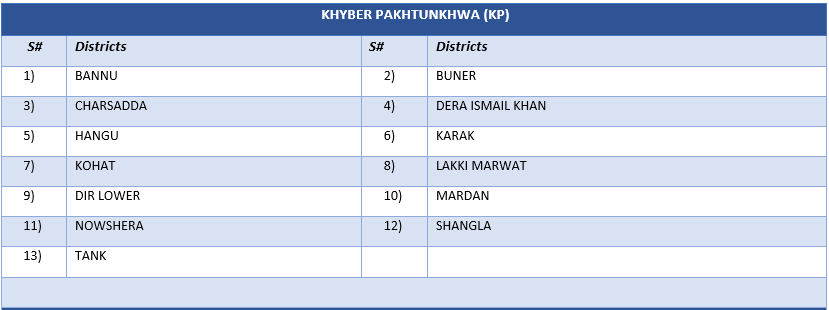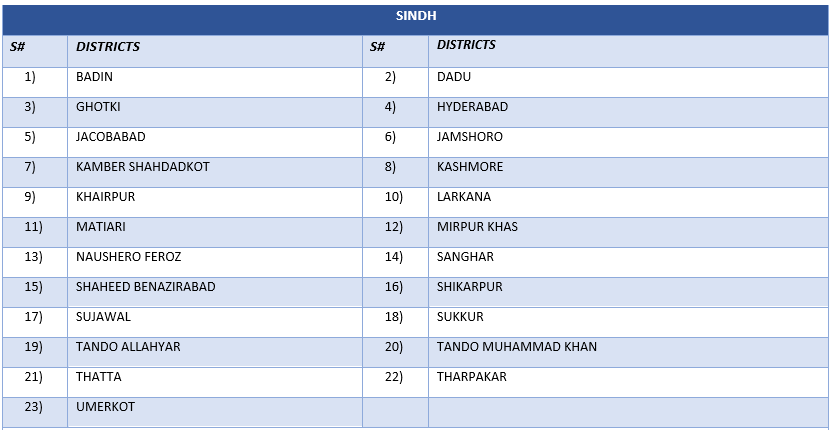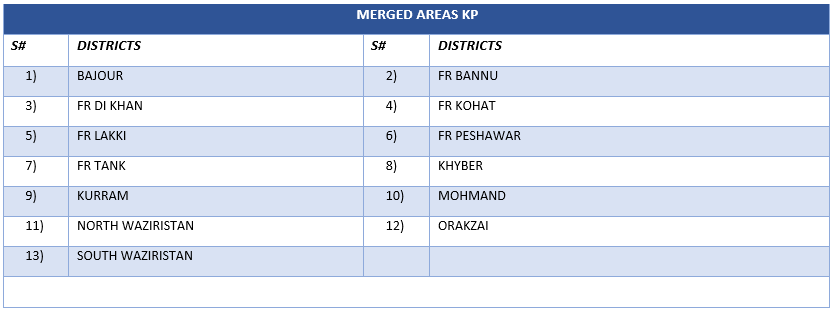Our Vision
Pakistan free from malaria by 2035.
Mission
The Malaria Technical Unit at CMU aims to achieve malaria elimination by ensuring equitable and universal access to effective curative and preventive services to everyone at risk of malaria in close coordination with the efforts of all the communities, national and international non-government organizations, private sector stakeholders, United Nations agencies and financial partners.
Achieving the vision of “Pakistan free from malaria” will contribute significantly to poverty alleviation as malaria is most prevalent in the poorest segment of the population.
Goals
In line with the WHO Global Technical Strategy for Malaria 2016-2030, the goals of the National Plan for Malaria Elimination in Pakistan, 2021-2030 are as follows:
- Ultimately interrupt transmission of and eliminating indigenous malaria throughout the entire country by 2035.
- Maintain malaria-free status in areas where malaria transmission has been interrupted and prevent re-establishment of local transmission.
General Objectives
The plan has four general objectives:
- Reducing the incidence of malaria to less than 1 case per 1000 population at risk in all Provinces/Federal Territories by 2030.
- Interrupting transmission of and eliminating indigenous P. falciparum malaria throughout the entire country by 2030.
- Interrupting transmission of and eliminating indigenous malaria in a phased manner progressively across the country by 2035.
- Preventing the re-establishment of local malaria transmission due to importation in all areas where it has been eliminated before and beyond 2035.
Milestones and Targets
By the end of 2020:
- Pakistan has developed and endorsed the NSP-ME 2021-2035, and national elimination campaign has been officially launched across the country.
By the end of 2023:
- An estimated reduction in the reported malaria incidence of 10 % at the national level compared with 2019.
- The re-establishment of local transmission prevented in areas where malaria has been eliminated.
By the end of 2025:
- An estimated reduction in the reported malaria incidence of 30% at the national level compared with 2019.
- Transmission of malaria including P. falciparum malaria interrupted and zero incidence of indigenous cases of malaria including P. falciparum malaria attained in Provinces/Federal Territories (Punjab, Azad Jammu & Kashmir, Gilgit Baltistan and Islamabad Capital Territory) and these Provinces/Federal Territories moved from Category 2 to Category 3.
- The re-establishment of local transmission prevented in areas where malaria has been eliminated.
By the end of 2030:
- An estimated reduction in the reported malaria incidence of 70% at the national level compared with 2019.
- API reached the elimination threshold in four Provinces/Federal Territories: Sindh, Balochistan, KP & Merged Areas/ex-FATA and these Provinces/Federal Territories moved from Category 1 to Category 2.
- Transmission of P. falciparum interrupted, and zero indigenous P. falciparum cases attained throughout the entire country.
- The re-establishment of local transmission prevented in areas where malaria has been eliminated.
By the end of 2035:
- Transmission of malaria interrupted, and zero incidence of indigenous cases attained in all Provinces/Federal Territories throughout the entire country.
- The re-establishment of local transmission prevented in areas where malaria has been eliminated
Current Statistics
- A total of 2,726,489 confirmed malaria cases have been reported from all health facilities across Pakistan in 2023. Around 15.65 million malaria suspects were screened at these health facilities.
- Highest numbers of the reported cases were P. Vivax (PV) 64.2% (1,751,637) followed by P. Falciparum (PF) 32.1% (875,162) and Mixed cases 3.7% (99,690).
- The cumulative API for all the districts/agencies of Pakistan in 2023 was 11.03 with ABER of 6.3 and TPR of 17.4.
- Provincial breakdown indicates that during 2023 highest number of cases was reported from Sindh 49.4% (1,346,210), Balochistan 37.9% (1,034,112), Khyber Pakhtunkhwa 8% (240,872) followed by Merged Areas 3.7% (101,922), Punjab 0.1% (3,202) and AJK 0.0% (165).
The Three major indicators API, ABER and TPR are shown in Figure 1.

*API = Annual Parasite Incidence
ABER= Annual Blood Examination Rate
TPR = Test Positivity Rate
The caseload for Pakistan from all health facilities is shown in Figure 2.

*PV= Plasmodium Vivax
PF= Plasmodium falciparum
Mix= PF/PV
Confirmed Malaria Cases Province Wise (Caseload)
The overall case load is 2,726,489 in 2023. Highest cases was reported by Sindh (1,346,210) followed by Balochistan, KP Merged Areas, and Khyber Pakhtunkhwa.

Annual Parasite Incidence (API)
The overall Annual Parasite Incidence (API) for the country in 2023 was 11.03. The highest API was reported by Balochistan at 70.25, followed by Sindh, the Merged Areas, and Khyber Pakhtunkhwa.

Annual Blood Examination Rate (ABER)
The overall ABER for all country was 6.3. Balochistan (26.0) reported the highest ABER followed by Merged Areas (11.8) as shown in Figure 5.

Test Positivity Rate (TPR)
The reported cumulative TPR was 17.4. Sindh reported the highest TPR of 27.4 followed Balochistan (22.0), and Merged Area KP (11.7) as shown in Figure 6.

Year-wise Comparison Of All Pakistan Data For Major Indicators



Our Services
- Universal coverage for free of cost malaria diagnosis & treatment services (around 2600 Govt/public and 1850 private microscopy & RDT centres).
- Capacity building of healthcare service providers including doctors & paramedics on malaria treatment (complicated and uncomplicated cases), malaria diagnosis (microscopy and RDT), quality assurance and malaria information system (MIS) including the DHIS-2.
- Prevention of Malaria in high-risk population through the Insecticide Treated Nets (ITN) and Indoor Residual Spray (IRS). Approx. 22.6 million mosquito nets have been distributed during 2009-2022.
- Improving health seeking behaviour of people through Radio campaign, Behaviour Change Communication (BCC) sessions and other mass media measures.
- Enhancing technical and managerial capacity of Provincial malaria control programs for planning, managing and monitoring of malaria control interventions in the targeted districts and agencies.
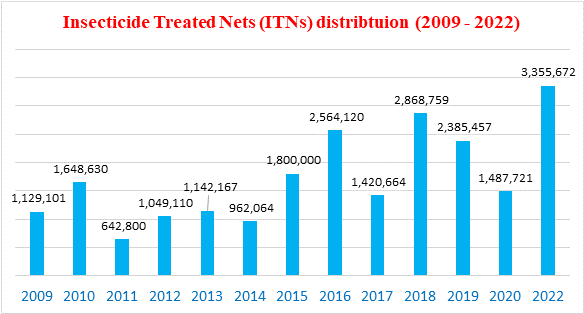
Programme Districts
